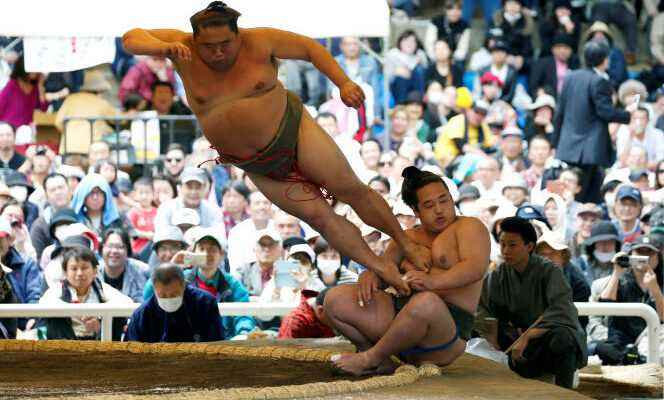At the crossroads of an international professional discipline and a pre-modern ceremony, sumo is considered one of the oldest sports in the world. This practice, saturated with a cultural implicit that mixes national religion and mythological folklore, is unclassifiable and represents for many the essence of a so-called pure and authentic Japanese tradition.
As an excuse to connect with the gods, sumo is more ritual than sport. Discipline beyond physical limits, millennial tradition, asceticism close to mystical experience, all the most evocative adjectives have been used to describe battles as exotic as they are impenetrable.
The least erudite spectator of a sumo match will first notice the complexity of the ceremonies, the codified gestures of the wrestlers, the rikishi, the architecture of an arena evoking a Japan haunted by the religious question. Before understanding the historical reconstruction of the spiritual origins of sumo, mixing mythology and Japanese identity, it is important to consider this practice as the physical embodiment of the presence of the gods.
An extension of ancient Shintoism
References to the national religion, Shinto (literally “way of the gods”), flood the sumo world. Spirituality entirely focused on purification (harai), supposed to bring harmony and appeasement to the gods of nature, Shinto and its values have infused Japanese society down to the most trivial uses, from corporate culture to ordinary politeness.
Ranging from referees, the famous gyōji, whose dress is inspired by priests kannushi, to the obligatory ritual ablutions before each fight, sumo represents well this clear and secular synthesis of complex religious symbols. As evidenced by the official presentation of the current Japan Sumo Association (the Nihon Sumo Kyokai), sumo is still seen in Japan as an extension of ancient Shintoism into the sporting world.
Before its professionalization and media coverage, Japanese wrestling was practiced on the grounds of sanctuaries, outdoors. Like the symbolic tracing of a sacred architecture, the dohyo, the raised clay arena where fights take place today still represents that ancient divine land once trodden by wrestlers. Above dohyothe yakata, a kind of suspended roof inspired by the great shrine of Ise and decorated with tassels representing the spirits of the four cardinal points, embodies the sky and the moving clouds. Between the two: the empty space where the gods dwell, where the rikishi clash.
You have 79.27% of this article left to read. The following is for subscribers only.
